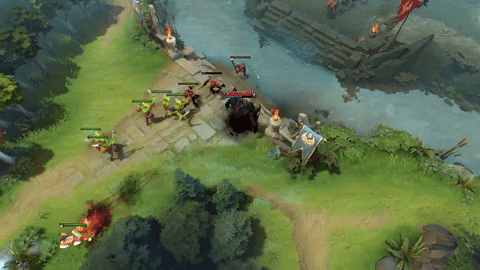

News
Elon Musk’s OpenAI to battle in Dota 2 World Championship video game tournament
OpenAI, a research lab co-founded by Elon Musk, has developed a new breed of AI agents that are capable of playing Dota 2, a complex strategy game, in 5-on-5 multiplayer matches. OpenAI’s new bots have so far been able to beat amateur and semi-professional teams. With this accomplished, the research lab is now looking to bring its bots to The International, a prolific Dota 2 tournament, this coming August.
The new bots go by the name of OpenAI Five, a reference to the number of neural networks working together in the team. To train the neural networks, the AI has been playing roughly 180 years worth of gameplay every day using reinforcement learning. This enables the AI to learn the intricacies of the game, considering that it is far more complicated than board games like Chess and Go. Dota 2, for example, involves hiding data from players, preventing the system from perceiving the entire playing field at a given time.
The hardware employed by the research lab to train OpenAI Five is impressive. The five neural networks train through a scaled-up version of Proximal Policy Optimization running on 256 GPUs and 128,000 CPU cores. The same setup was adopted in a much smaller scale last year when OpenAI rolled out an artificial intelligence system that proved capable of beating the best Dota 2 players in the world in 1-on-1 matches.
Currently, however, OpenAI Five can only play the game with several restrictions. For one, the AI system can only use five of the 115 heroes available in the game. Skills such as Invisibility, Summons, and the placement of wards are also disabled. The research lab, however, hopes that through time, the neural networks would be able to play the game without any restrictions at all.
As could be seen in a recent video shared by the research lab, OpenAI Five is actually being received well by the Dota 2 community. Professional Dota 2 player Blitz, for one, noted that the bots are adopting strategies that are incredibly effective. In a match against OpenAI Five, Blitz, together with four employees of the research lab, put up a fight before getting dominated by the articificial intelligence. In a statement after the game, Blitz sheepishly stated that the bots capitalized on every small error he made during the match.
“I think the team fight aspect of the bot(s) was excellent. It didn’t mess up. When it came to coordination, it was some of the best pure team fighting because it felt like I was getting hammered every single time I made a mistake. I feel like normal humans don’t do that,” the professional Dota 2 player said.
So what’s the secret behind OpenAI Five? In a statement to The Verge, OpenAI CTO Greg Brockman noted that unlike human players, the bots have “no ego” when they play the game. The teamwork aspect of the bots was also trained by allowing them to work individually at first, then encouraging them to work together.
“The bots are totally willing to sacrifice a lane or abandon a hero for the greater good. For fun, we had a human drop in to replace one of the bots. We hadn’t trained them to do anything special, but he said he just felt so well-supported. Anything he wanted, the bots got him,” Brockman said.
Ultimately, Brockman is encouraged by OpenAI Five’s development so far. The research, after all, is motivated by the idea that if AI systems can be trained to perform complex tasks such as learning a game as intricate as Dota 2, it could eventually be used to solve equally complex real-world challenges. Some examples of real-world applications could be designing and managing a city’s transport structure, or the logistics of a massive business.
“This an exciting milestone, and it’s really because it’s about transitioning to real-life applications. If you’ve got a simulation of a problem and you can run it large enough scale, there’s no barrier to what you can do with this,” he said.

News
Tesla Model Y L is gaining momentum in China’s premium segment
This suggests that the addition of the Model Y L to Tesla China’s lineup will not result in a case of cannibalization, but a possible case of “premiumization” instead.
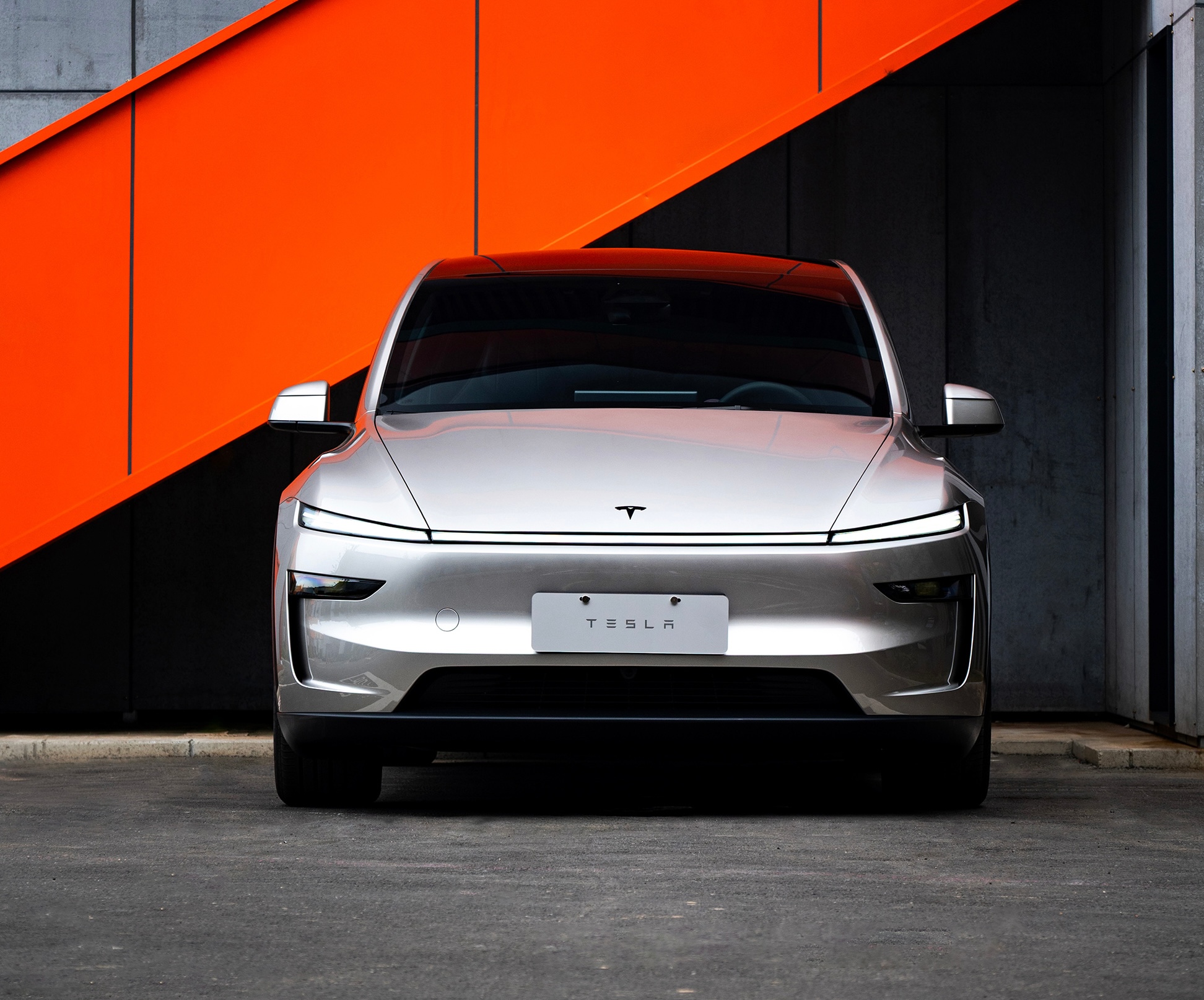
Tesla’s domestic sales in China held steady in November with around 73,000 units delivered, but a closer look at the Model Y L’s numbers hints at an emerging shift towards pricier variants that could very well be boosting average selling prices and margins.
This suggests that the addition of the Model Y L to Tesla China’s lineup will not result in a case of cannibalization, but a possible case of “premiumization” instead.
Tesla China’s November domestic numbers
Data from the a Passenger Car Association (CPCA) indicated that Tesla China saw domestic deliveries of about 73,000 vehicles in November 2025. This number included 34,000 standard Model Y units, 26,000 Model 3 units, and 13,000 Model Y L units, as per industry watchers.
This means that the Model Y L accounted for roughly 27% of Tesla China’s total Model Y sales, despite the variant carrying a ~28% premium over the base RWD Model Y that is estimated to have dominated last year’s mix.
As per industry watcher @TSLAFanMtl, this suggests that Tesla China’s sales have moved towards more premium variants this year. Thus, direct year-over-year sales comparisons might miss the bigger picture. This is true even for the regular Model Y, as another premium trim, the Long Range RWD variant, was also added to the lineup this 2025.
November 2025 momentum
While Tesla China’s overall sales this year have seen challenges, the Model Y and Model 3 have remained strong sellers in the country. This is especially impressive as the Model Y and Model 3 are premium-priced vehicles, and they compete in the world’s most competitive electric vehicle market. Tesla China is also yet to roll out the latest capabilities of FSD in China, which means that its vehicles in the country could not tap into their latest capabilities yet.
Aggregated results from November suggest that the Tesla Model Y took the crown as China’s #1 best-selling SUV during the month, with roughly 34,000 deliveries. With the Model Y L, this number is even higher. The Tesla Model 3 also had a stellar month, seeing 25,700 deliveries during November 2025.
Cybertruck
Tesla Cybertruck earns IIHS Top Safety Pick+ award
To commemorate the accolade, the official Cybertruck account celebrated the milestone on X.

The Tesla Cybertruck has achieved the Insurance Institute for Highway Safety’s (IIHS) highest honor, earning a Top Safety Pick+ rating for 2025 models built after April 2025.
The full-size electric pickup truck’s safety rating is partly due to the vehicle’s strong performance in updated crash tests, superior front crash prevention, and effective headlights, among other factors. To commemorate the accolade, the official Cybertruck account celebrated the milestone on X.
Cybertruck’s IIHS rating
As per the IIHS, beginning with 2025 Cybertruck models built after April 2025, changes were made to the front underbody structure and footwell to improve occupant safety in driver-side and passenger-side small overlap front crashes. The moderate overlap front test earned a good rating, and the updated side impact test also received stellar marks.
The Cybertruck’s front crash prevention earned a good rating in pedestrian scenarios, with the standard Collision Avoidance Assist avoiding collisions in day and night tests across child, adult crossing, and parallel paths. Headlights with high-beam assist compensated for limitations, contributing to the top award.
Safest and most autonomous pickup
The Cybertruck is one of only two full-size pickups to receive the IIHS’ Top Safety Pick + rating. It is also the only one equipped with advanced self-driving features via Tesla’s Full Self-Driving (Supervised) system. Thanks to FSD, the Cybertruck can navigate inner city streets and highways on its own with minimal supervision, adding a layer of safety beyond passive crash protection.
Community reactions poured in, with users praising the vehicle’s safety rating amidst skepticism from critics. Tesla itself highlighted this by starting its X post with a short clip of a Cybertruck critic who predicted that the vehicle will likely not pass safety tests. The only question now is, of course, if the vehicle’s Top Safety Pick+ rating from the IIHS will help the Cybertruck improve its sales.
News
Tesla stands to gain from Ford’s decision to ditch large EVs
Tesla is perhaps the biggest beneficiary of Ford’s decision, especially as it will no longer have to deal with the sole pure EV pickup that outsold it from time to time: the F-150 Lightning.
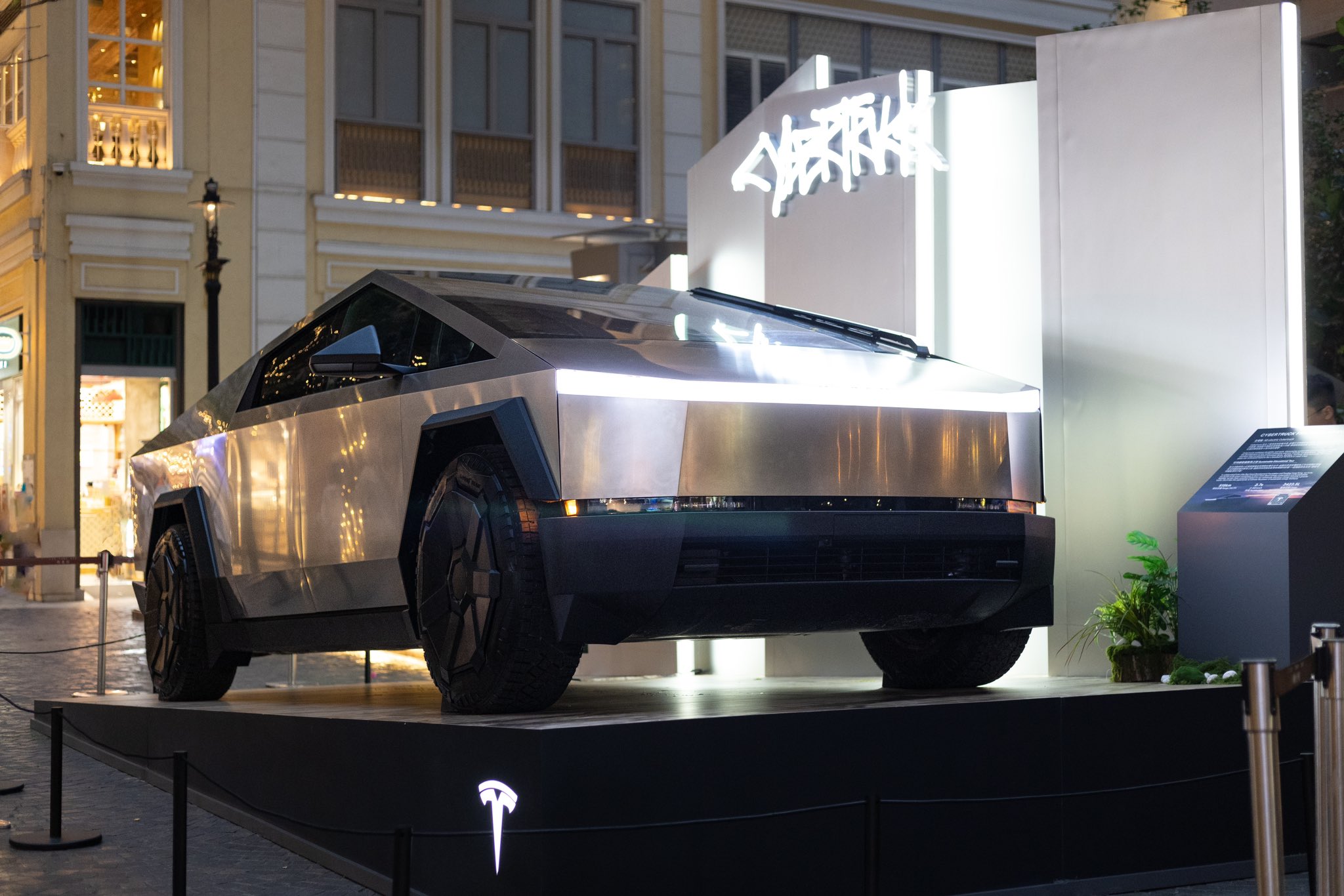
Ford’s recent decision to abandon production of the all-electric Ford F-150 Lightning after the 2025 model year should yield some advantages for Tesla.
The Detroit-based automaker’s pivot away from large EVs and toward hybrids and extended-range EVs that come with a gas generator is proof that sustainable powertrains are easy on paper, but hard in reality.
Tesla is perhaps the biggest beneficiary of Ford’s decision, especially as it will no longer have to deal with the sole pure EV pickup that outsold it from time to time: the F-150 Lightning.
Here’s why:
Reduced Competition in the Electric Pickup Segment
The F-150 Lightning was the Tesla Cybertruck’s primary and direct rival in the full-size electric pickup market in the United States. With Ford’s decision to end pure EV production of its best-selling truck’s electric version and shifting to hybrids/EREVs, the Cybertruck faces significantly less competition.
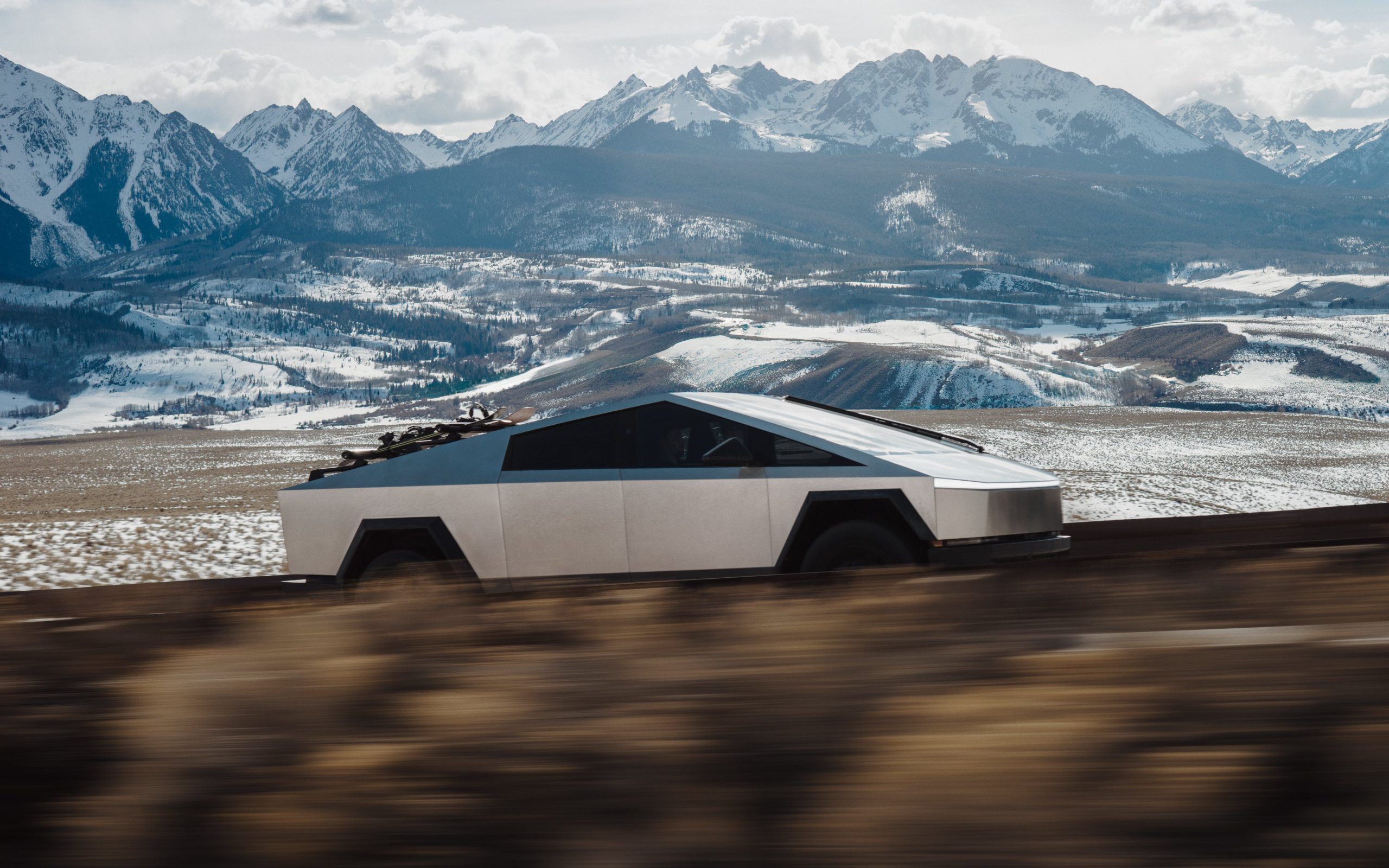
Credit: Tesla
This could drive more fleet and retail buyers toward the Cybertruck, especially those committed to fully electric vehicles without a gas generator backup.
Strengthened Market Leadership and Brand Perception in Pure EVs
Ford’s pullback from large EVs–citing unprofitability and lack of demand for EVs of that size–highlights the challenges legacy automakers face in scaling profitable battery-electric vehicles.
Tesla, as the established leader with efficient production and vertical integration, benefits from reinforced perception as the most viable and committed pure EV manufacturer.
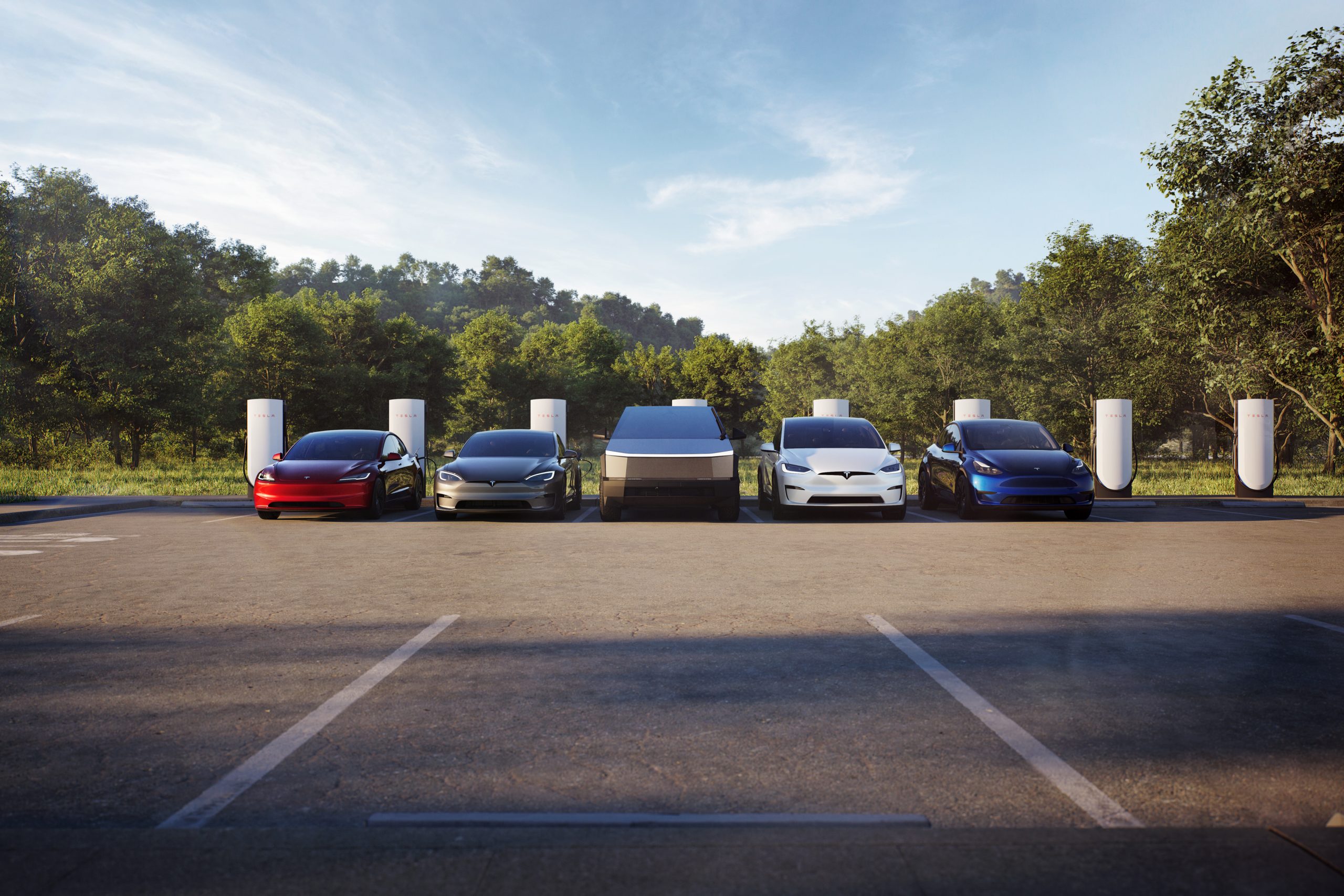
Credit: Tesla
This can boost consumer confidence in Tesla’s long-term ecosystem over competitors retreating to hybrids. With Ford making this move, it is totally reasonable that some car buyers could be reluctant to buy from other legacy automakers.
Profitability is a key reason companies build cars; they’re businesses, and they’re there to make money.
However, Ford’s new strategy could plant a seed in the head of some who plan to buy from companies like General Motors, Stellantis, or others, who could have second thoughts. With this backtrack in EVs, other things, like less education on these specific vehicles to technicians, could make repairs more costly and tougher to schedule.
Potential Increases in Market Share for Large EVs
Interestingly, this could play right into the hands of Tesla fans who have been asking for the company to make a larger EV, specifically a full-size SUV.
Customers seeking large, high-capability electric trucks or SUVs could now look to Tesla for its Cybertruck or potentially a future vehicle release, which the company has hinted at on several occasions this year.
With Ford reallocating resources away from large pure EVs and taking a $19.5 billion charge, Tesla stands to capture a larger slice of the remaining demand in this segment without a major U.S. competitor aggressively pursuing it.








